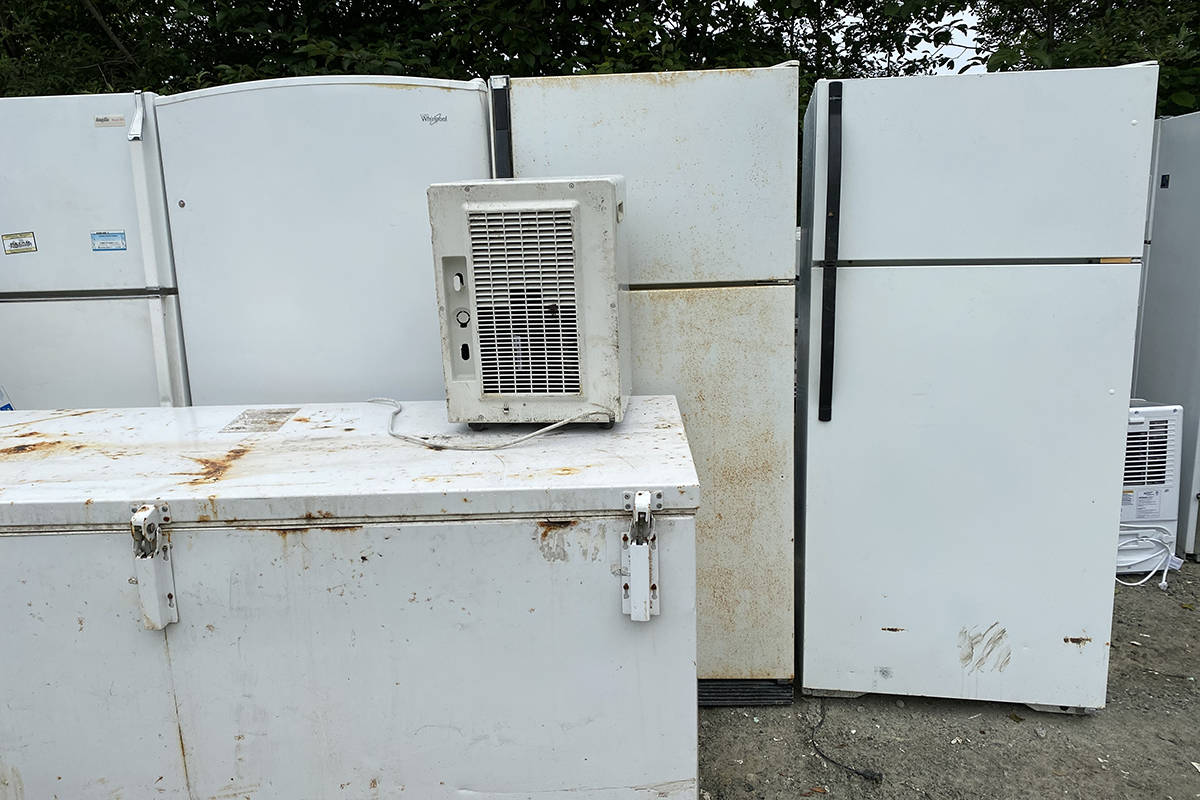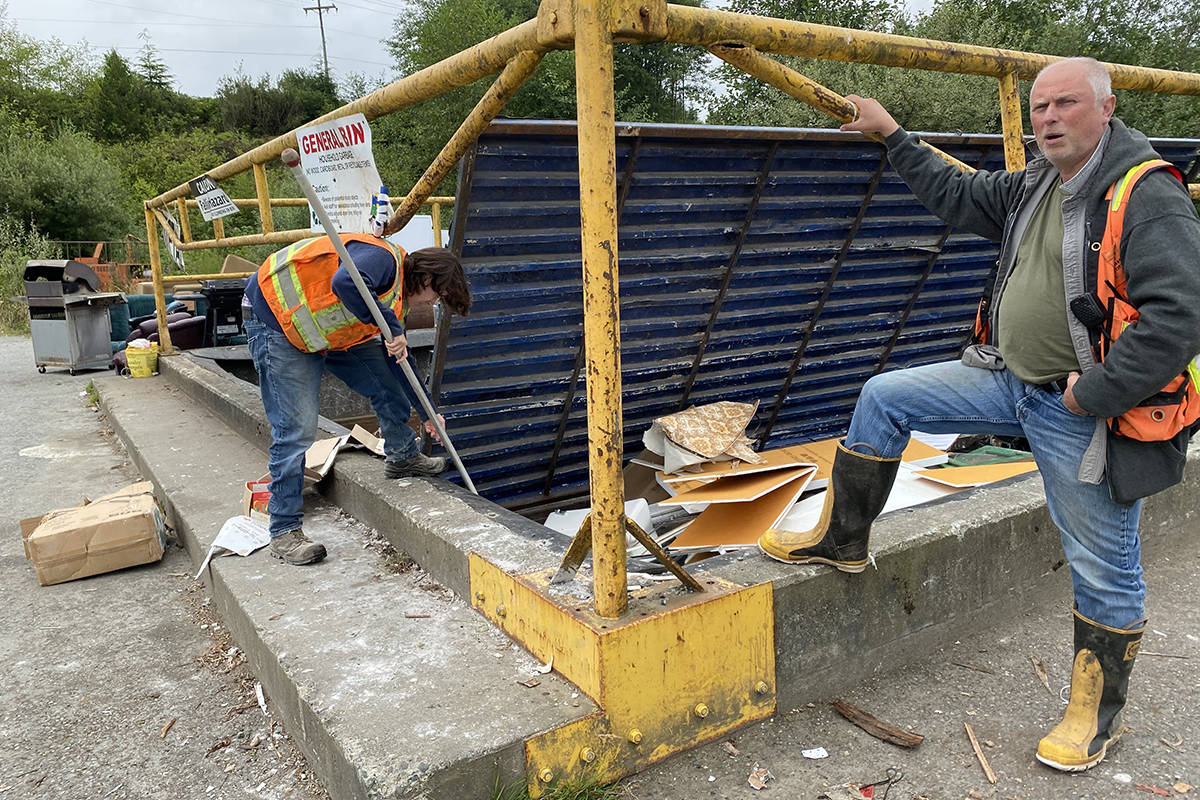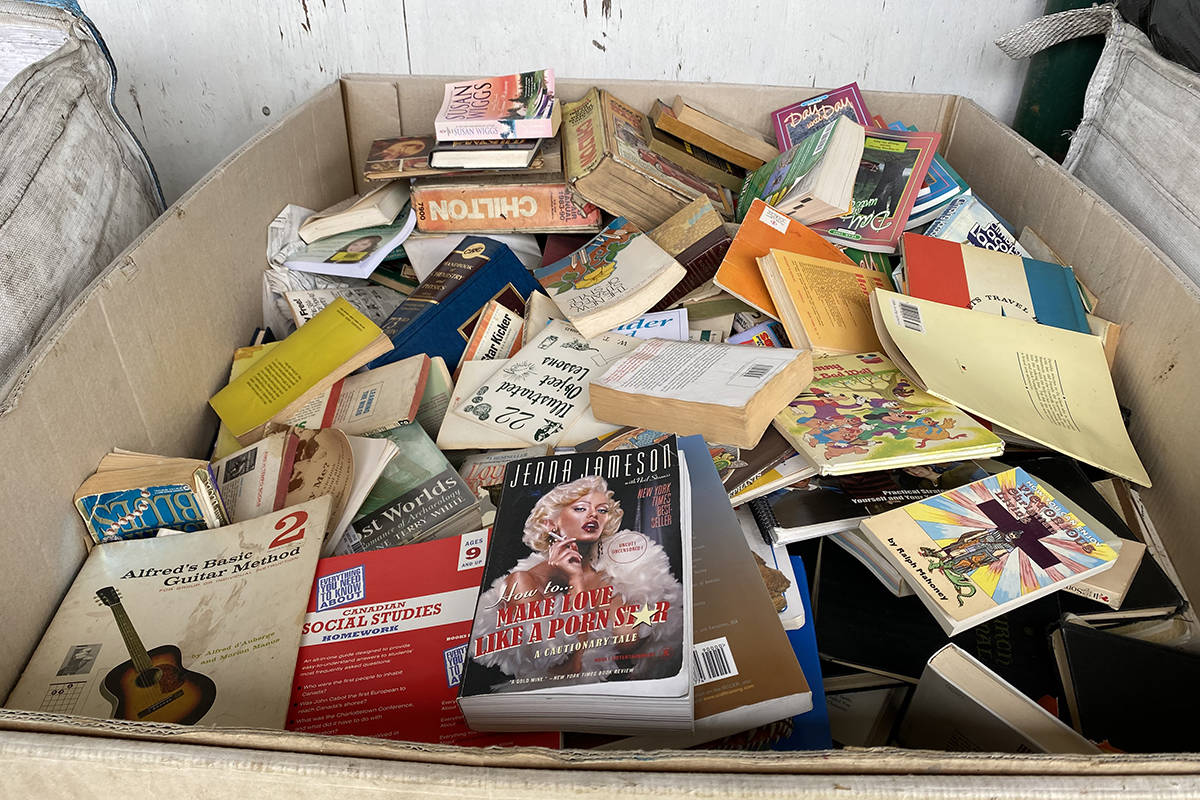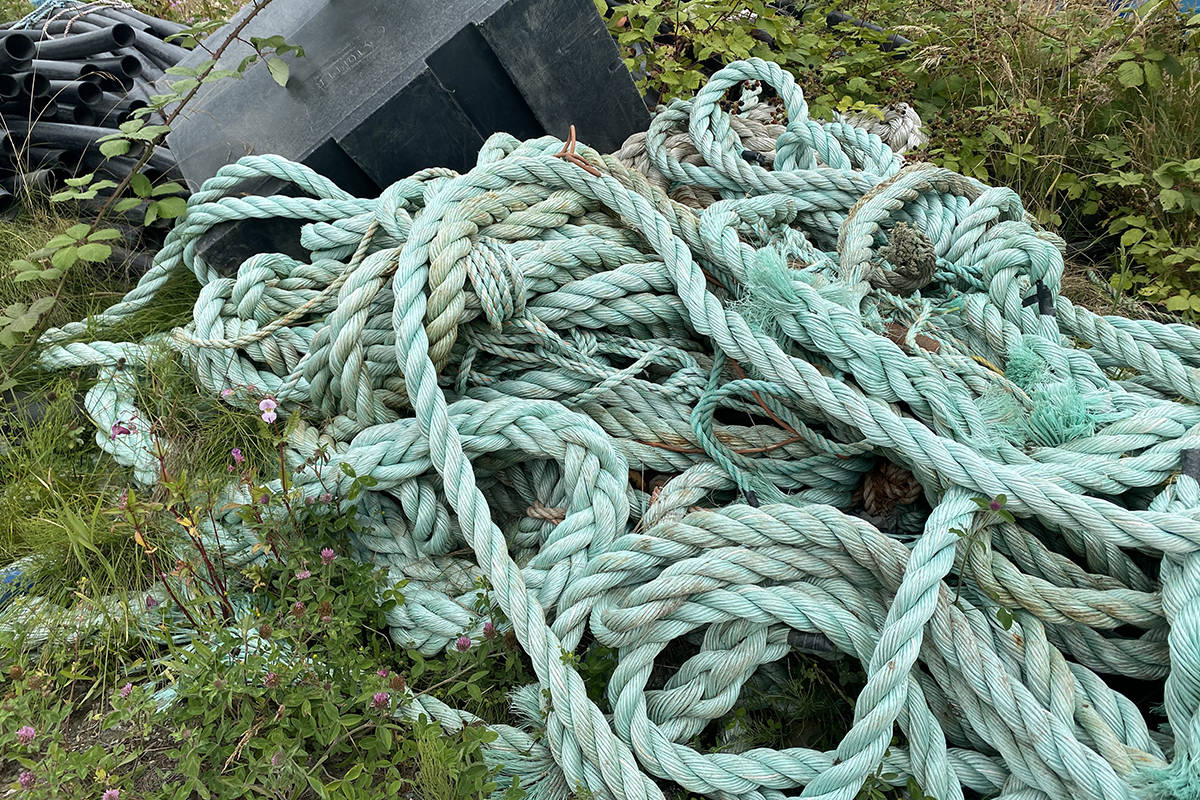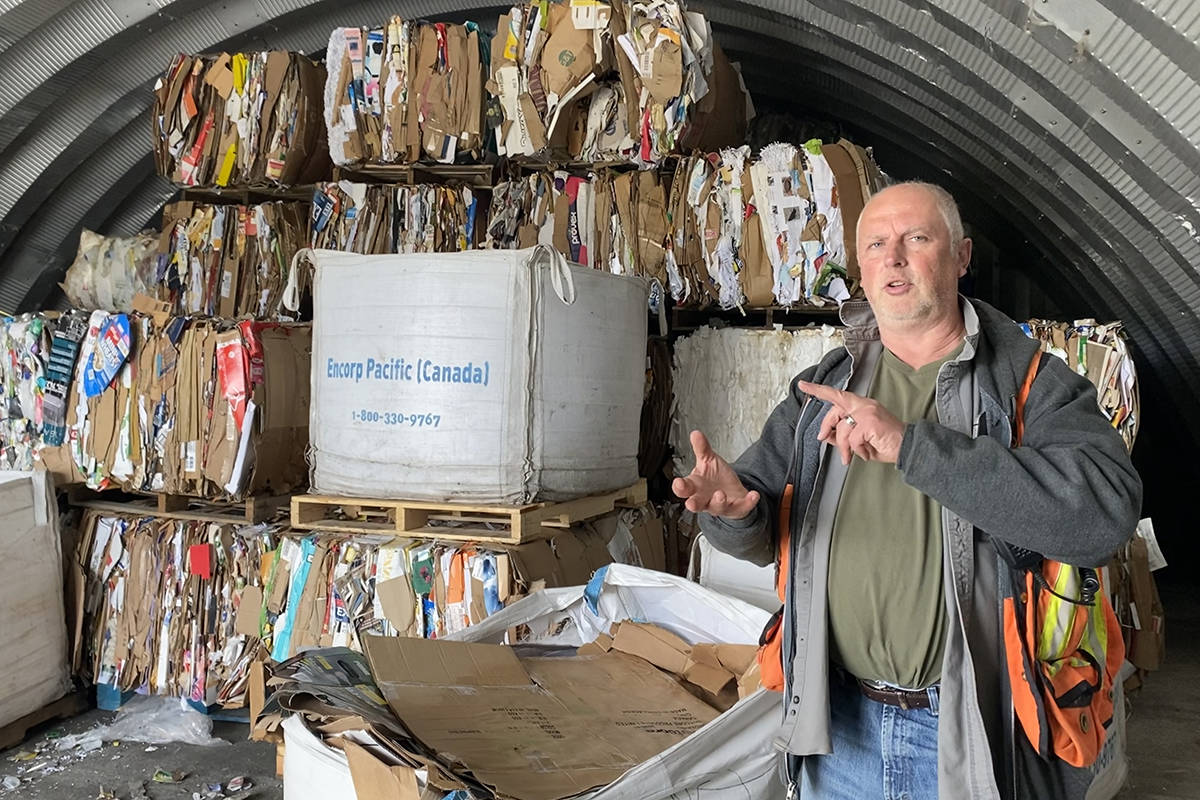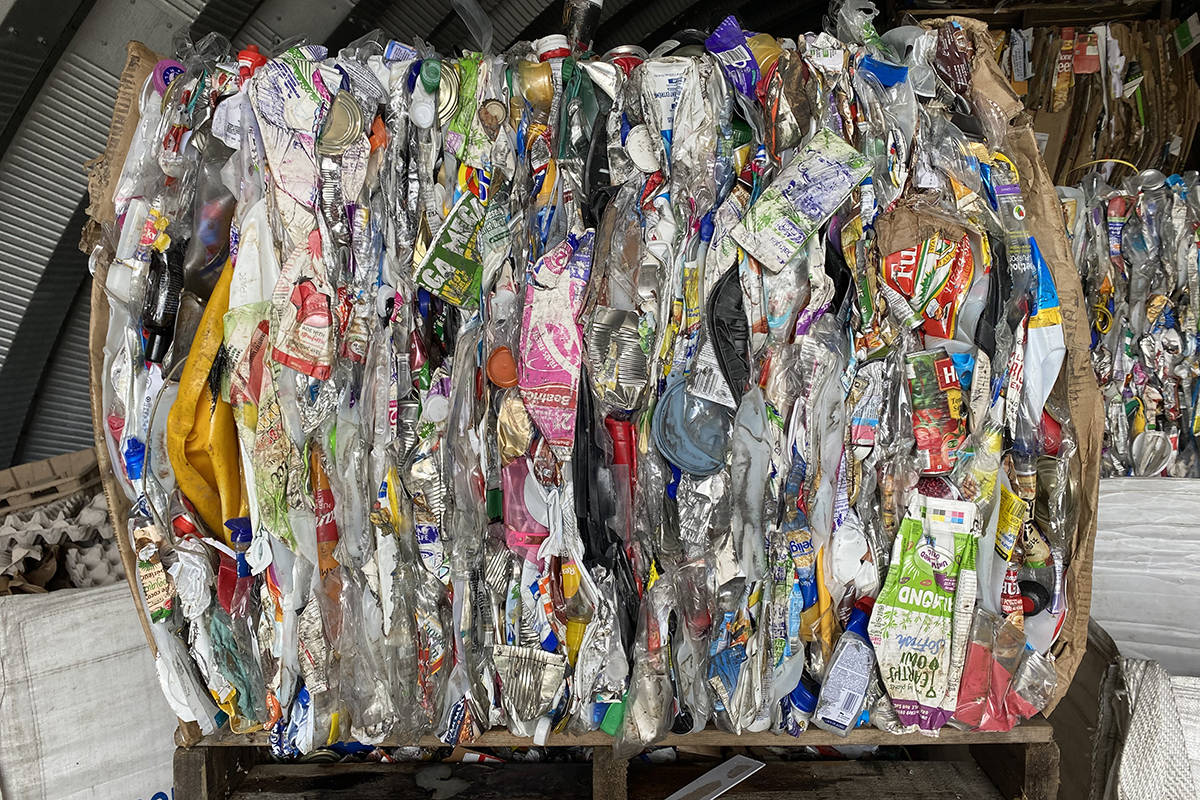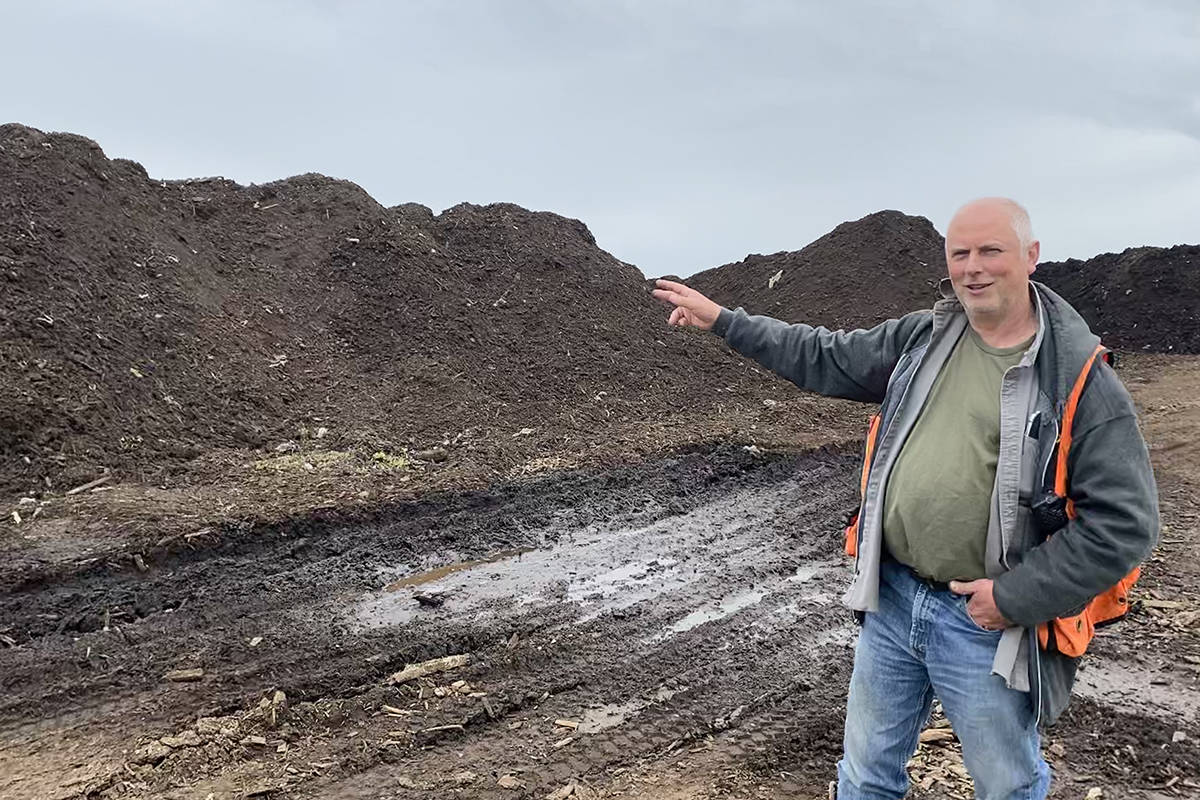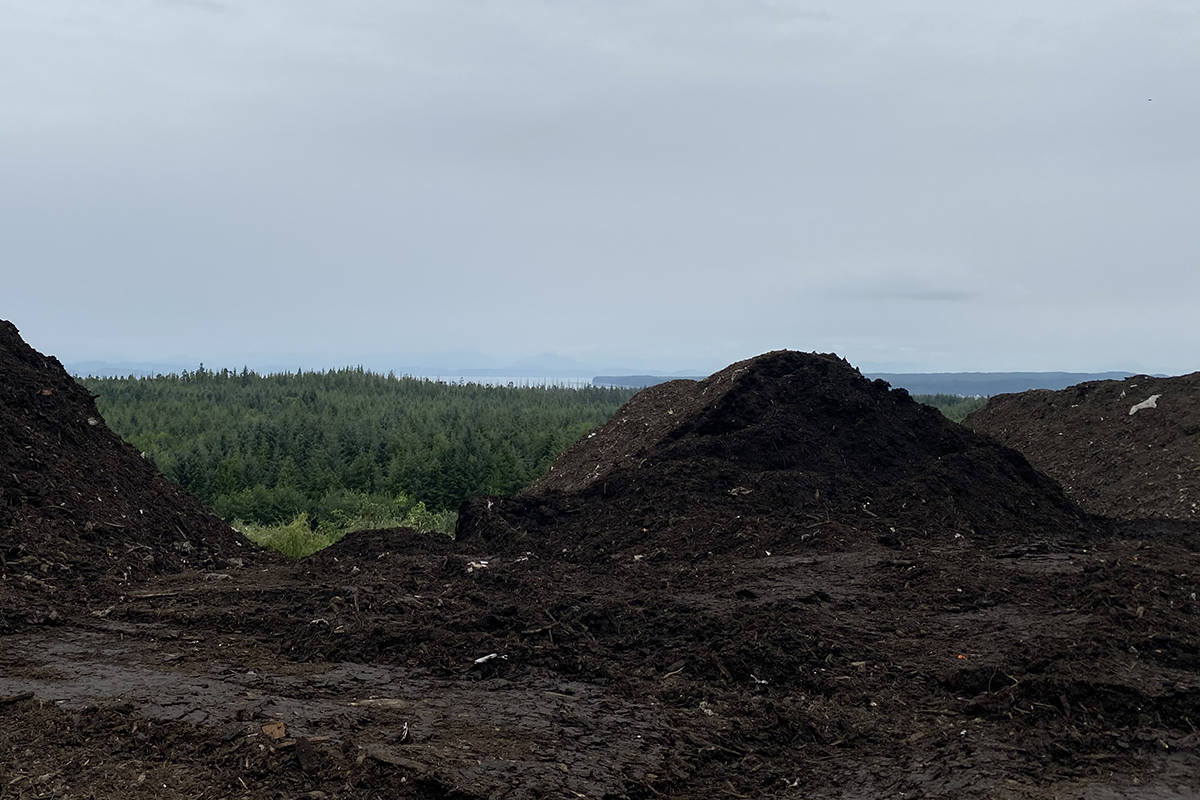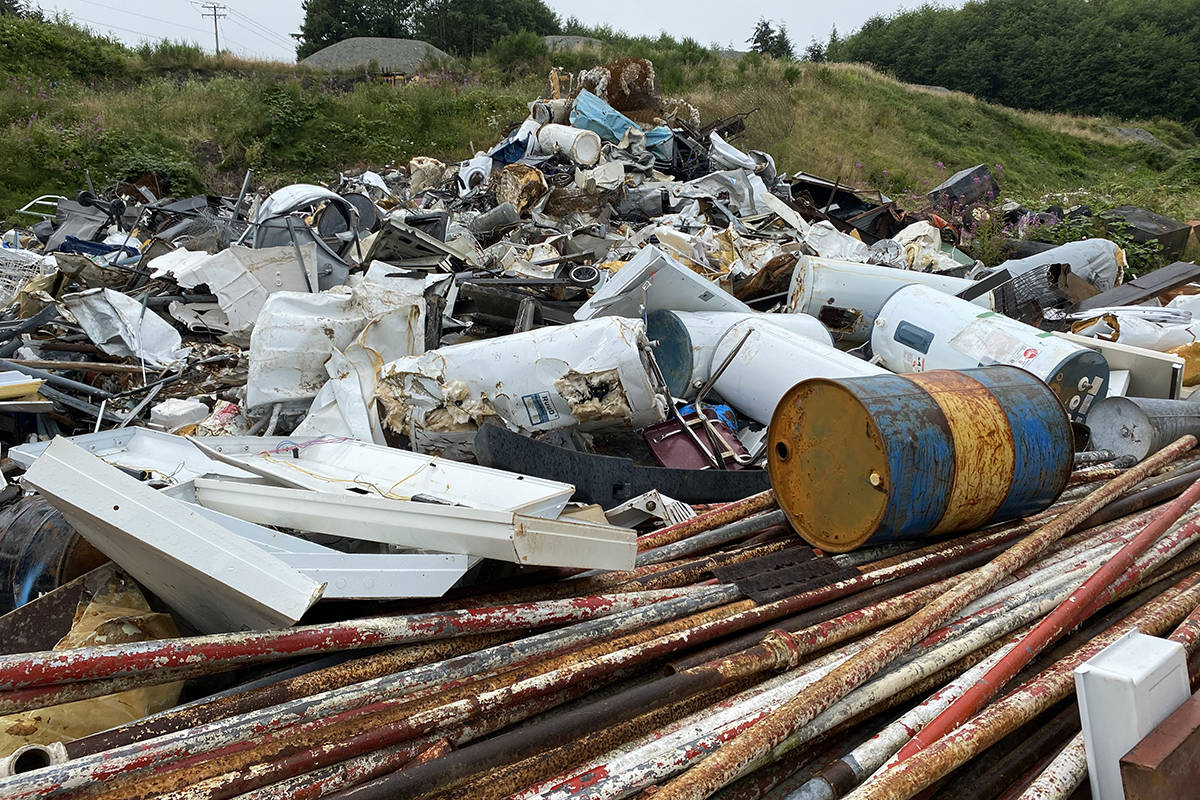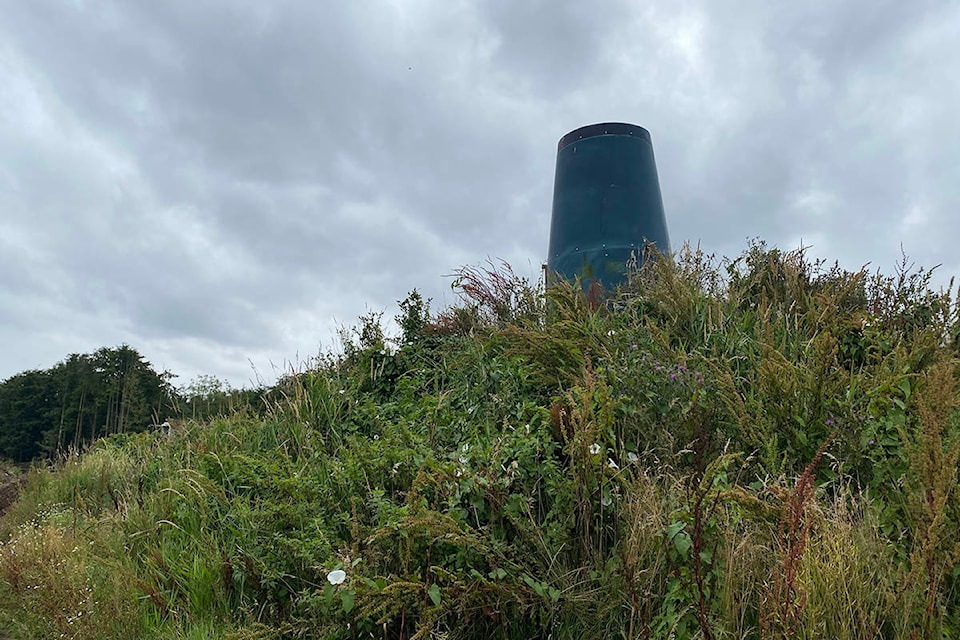The 7 Mile Landfill and Recycling Centre has been around for decades, but residents might be surprised to see how much innovation is going on behind the gates — and underground.
Patrick Donaghy, operations manager for the Regional District of Mount Waddington is in charge of solid waste management for the area, and it’s his favourite part of the job.
“Our main goal is diversion,” he said, and a walk through the 7 Mile yard is proof. It looks like more space is used for recycling materials than for the landfill itself.
Donaghy is enthusiastic about reducing greenhouse gasses at the landfill. He knows exactly what tonnage of carbon dioxide refrigerant fluid is equivalent to, and how much methane gas doesn’t get released from 7 Mile due to low tech innovation. That is, 2,000 tons of annual carbon offsets, a major contribution towards making the north Island’s municipal operations completely carbon neutral.
RELATED: Vancouver Island garbage man gives holiday gift to his biggest fan
In the metal yard, two dozen fridges stand to the side, where the highly dangerous refrigerant fluid will be removed before the units are scrapped for metal. Old fridges have chlorofluorocarbons, which are damaging to the ozone layer in the atmosphere. Since the ’80s, chemicals like chlorofluorocarbon have been phased out and replaced with hydrofluorocarbons, which are better for the ozone but harsher on global warming.
“We know that a ton of methane gas is equal to 120 tons of carbon dioxide. Well, refrigerants are thousands of times more potent than CO2.”
In the metal pile, a camp chair is strewn on top of a discarded excavator bucket. The top of an old stove is squished beneath steel drums, and the wheeled legs of a barbecue jut upward. The pile of metal will grow until it’s big enough to call in the metal buyer.
Next is a bin for household waste. Doors, windows, mirrors, drywall and linoleum. A 7 Mile worker comes around with a long-handled poker to remove misplaced cardboard so it can be recycled.
“If you leave it in there the next person thinks it’s okay,” Donaghy noted.
Behind the recycling bins are large half-circle container buildings stuffed with curbside recycling.
“This is really clean, actually. I’m really proud of this. There are no plastic bags, there’s no glass,” Donaghy says as he inspects the piles of flattened boxes, milk cartons, empty detergent jugs and tin cans. It will all be sorted into bails to be shipped down Island and sold overseas to begin a second life.
Recycling requires a certain nitpickiness to succeed as a business. Consider the well-publicized story of 69 containers of contaminated recycling that was returned to Canada from the Philippines, which refused to be be stuck with the trash. It’s the result of, among other things, contaminated recycling where materials are not accurately sorted. Broken glass in a container of plastic will render the whole pile useless for recycling.
Donaghy says Recycle BC — the organization that collects and sells all B.C’.’s residential recycling — has some of the best quality recycling in the world, which means they have an easier time finding buyers for our squished milk cartons. To keep it that way, Recycle BC audits places like 7 Mile five to six times a month, scoring them on how well materials are separated — paper from plastics from glass, etc. Recycle BC is itself audited, to ensure the goods are actually recycled and not burned for energy.
Extended Producer Responsibility, a program that’s been growing and expanding in B.C. since the ’70s, puts the onus on producers to divert 75 per cent of packaging from the garbage stream. It’s contributed to a robust system of recycling in B.C.
Where remote landfills used to be responsible to transport and find buyers for all their recyclables, through Recycle BC transportation costs for recyclable materials are covered – a major incentive for small places like Winter Harbour, Old Quatsino Woss and Sointula to divert as much as they can from the trash barges.
Seeing things from Donaghy’s perspective, it’s clear that recycling is a business, not just a heap where pop bottles go to die. It’s the start of a new product cycle.
7 Mile’s low contamination rate – three per cent – is a point of pride among recycling colleagues . (“Polite company doesn’t ask about contaminating rates. You either boast about it, or don’t mention it.”) They achieve it with several layers of checks between curbside pick-up, shipping the materials down Island, and burying the non-recyclables, with incentives at every level. Last year the facility processed 242 tons of recycling between curbside pick ups and the depots around the north Island, compared to 7,840 tons that were buried in the landfill.
The Reduce, Reuse, Recycle ethos is life at 7 Mile. Mussel shells that have been cleaned off aquaculture nets are piled separately in case a use is ever found for them. Discarded plastic pipes are separated and will be ground into chips and sold. Fishing ropes are set aside for salvage. An old repeater tower from a logging operation was saved and is now used as a wifi tower to get data from the leachate equalization pond to the supervisor. Roof shingles are separated to be placed on roads when the mud gets too deep. Contaminated soil is used as fire break layers in the landfill.
Scrap wood is one of the largest sources of waste 7 Mile processes — 1,000 tons last year — and they’ve done something magically low-tech and environmentally helpful with it. Left alone, wood waste produces methane as it decomposes. At the same time Port Hardy produces 1,000 tons of solid bio waste a year from its wastewater treatment plant, which could take up a lot of space in the landfill.
The solution is simple and effective.
The biosolids and hog fuel (wood chips) are mixed together to make a rudimentary compost that gets spread on top of the old landfill, which filled up in 2011.
Each week the compost gets turned, moving left across the top of the old landfill — with a lovely view of the Queen Charlotte Strait. The constant rotation keeps bacteria happy and stops methane gas from being produced in the hot, low belly of the compost piles. And the bacteria deep in the landfill eats up any metal ions that acidic rain would otherwise flush into the groundwater.
This strategy earns 7 Mile half of their 2,000 annual tons of carbon offset credits.
The new landfill cell built in 2009 is lined and piped so rainwater doesn’t filter into the groundwater like the old cell. It drains into a leachate pond equipped with aerators that help nature separate solids out of the water. Clean water is then released to the environment while metallic biosolids stay behind.
This cell is also the last chance 7 Mile has to divert any possible recyclables from being buried. Instead of the commonly used compactor, 7 Mile uses an excavator to pack trash into the landfill. The excavator operator is financially incentivized to remove any useful materials before burying them.
The only question Donaghy couldn’t answer was why the landfill is called 7 Mile.
“I guess it was seven miles from somewhere at some point.”
For more news from Vancouver Island and beyond delivered daily into your inbox, please click here.
Do you have something to add to this story or something else we should report on? Email: zoe.ducklow@blackpress.ca
Like us on Facebook and follow us on Twitter.
